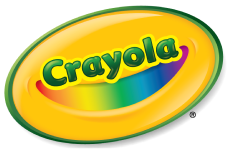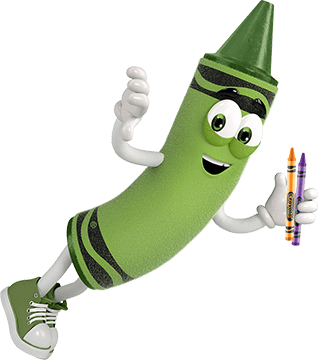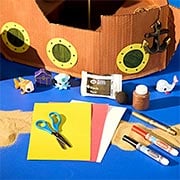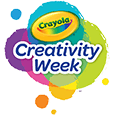Si bien nos encanta encontrar nuevas formas de crear con nuestros compuestos de modelado, en Crayola, la seguridad de nuestros artistas es nuestra principal prioridad.
Los compuestos para modelar Crayola no están diseñados para convertirse en candelabros o artículos similares que entrarían en contacto con llamas abiertas y fuentes de calor altas. Por esa razón, no recomendamos usar compuestos para modelar Crayola, húmedos o secos, cerca de una llama abierta, en un horno, microondas o horno. La exposición a fuentes de calor altas puede causar desecación, agrietamiento y oscurecimiento.
¡Siempre estamos aquí para ayudar! No dude en llamarnos o enviarnos un mensaje de texto al 1-800-272-9652 de lunes a viernes entre las 9 a. m. y las 4 p. m., hora del este. Si prefiere enviarnos un correo electrónico, visite nuestra página de contacto.
Si tienes preguntas adicionales, ¡nos encantaría saber de ti! No dudes en llamarnos o enviarnos un mensaje de texto al 1-800-CRAYOLA días laborables entre las 9 AM y las 4 PM hora del Este. Si prefieres enviarnos un correo electrónico, visita nuestra página de contacto.
Preguntas relacionadas
Explora respuestas a preguntas comunes, consejos útiles para eliminar manchas e ideas creativas para aprovechar al máximo nuestros materiales de arte y recursos gratuitos.
-
We love new and exciting ways to use Crayola products! Eggs that have been decorated with our products are not recommended for consumption, since art materials are not food-grade.
-
Primary Colors: Primary colors are the foundation for creating other colors. They cannot be created by mixing other colors together. The primary colors are:
- red
- blue
- yellow
Secondary Colors: Secondary colors are created by mixing two primary colors.
- red + yellow = orange
- yellow + blue = green
- blue + red = violet
Tertiary Colors: Tertiary colors are created by mixing primary colors and adjacent secondary colors on the color wheel.
- red + orange = red orange
- green + yellow = yellow green
- blue + violet = blue violet
Need a visual? Learn more about blending and mixing colors on Crayola's color theory page.
-
Throughout Crayola's history, several crayon colors have been retired, marking significant moments in the evolution of our vibrant palette.
1990
For the first time in Crayola history, eight colors were retired and placed in the Crayola Hall of Fame: blue gray, green blue, lemon yellow, maize, orange red, orange yellow, raw umber, and violet blue. Eight new colors were added: cerulean, dandelion, fuchsia, jungle green, royal purple, teal blue, vivid tangerine, and wild strawberry.2003
Celebrating a century of bringing color to the world, Crayola introduced four new colors named by Crayola fans! To make room for the new hues, we bid farewell to blizzard blue, magic mint, mulberry, and teal blue. The four new colors that were introduced are: inchworm, jazzberry jam, mango tango, and wild blue yonder. Kudos to our hue heroes - the consumers who voted in the "Save the Shade" campaign, ensuring burnt sienna stayed in the pack.2017
To mark National Crayon Day on March 31st, we announced Dandelion was leaving the pack. To honor this iconic color, we sent Dandelion on a retirement tour to his favorite places. His replacement, Bluetiful, was announced on May 5, 2017.Looking for more historical facts about our colorful company? We've got them on the Crayola History page!
-
Crayola® Portfolio® Series products are generally used by adults and older children because of their permanence. This product line offers the quality of professional art materials without the professional prices. Portfolio Series products include Acrylic Paints and Water-Soluble Oil Pastels. Use our where to buy store locator to help you find local and online retailer for purchasing options.
-
The basic ingredients contained in Crayola® Crayons are paraffin wax and color pigment. These ingredients are the same for all Crayola Crayon colors, with some modifications in special effects crayons.
Crayola Crayons begin to melt at around 105° Fahrenheit and have a melting point between 120° - 147° Fahrenheit. The melting point is the same for all regular Crayola Crayons; however, the density and amount of pigment included in different crayons will result in varying thickness or viscosity of the mixture.




